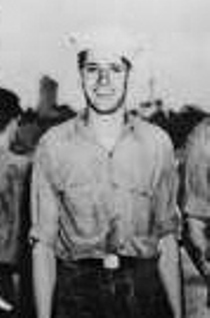WILLIAM R. RIENDEAU


On June 4, 1944, an order not heard aboard a U.S. Navy ship in over 100-years was sounded - Away all boarding parties. Thus began an event which culminated in the boarding and capture at sea by the Navy of a foreign man-of-war during battle which had not occurred since 1815. This was the capture of the sinking German submarine U-505 approximately 150-miles off the west coast of Africa by antisubmarine hunter-killer Task Group 22.3. The event was unprecedented and kept secret from Germany and the U.S. public for almost a year until the close of World War II against Germany.
Task Group 22.3 sailed from Norfolk, Virginia, on May 15, 1944, with five destroyer escorts, including the USS PILLSBURY (DE-133), screening the escort aircraft carrier USS GUADALCANAL (CVE-60). CAPT Daniel V. Gallery, the task group commander aboard GUADALCANAL formed an audacious plan to force a damaged German U-boat to the surface, force its crew overboard, and then board and capture it before it sank. On May 17, 1944, CAPT Gallery sent the following message to his escort ships: EACH ESCORT DRAW UP PLANS AND ORGANIZE A PARTY TO BOARD-CAPTURE AND TAKE SUB IN TOW IF OPPORTUNITY ARISES. CAPT Gallery later exclaimed, The plan worked to perfection!
Until the bright and sunny morning of Sunday, June 4, 1944, the passage of Task Group 22.3 had been uneventful and with fuel running low CAPT Gallery had ordered TG-22.3 to make for Casablanca to refuel. At 1109 one of the escorts reported, WE ARE INVESTIGATING POSSIBLE SOUND CONTACT. At 1112, the escort signaled her confirmation of the contact as a submarine and fired a full pattern of hedgehogs at the submerged contact. The contact-detonated hedgehogs missed their target. Two fighter planes flying cover for GUADALCANAL quickly sighted the submerged U-boat and fired their guns into the water to mark its location. A second depth charge attack hit its mark and the damaged U-505 rose to the surface. It could not have been in a worse position as she was surrounded by ships of the task force which immediately sent hundreds of rounds of antipersonnel fire toward the submarine, designed to drive the crew overboard without causing serious structural damage. The two aircraft also attacked the U-505, each making nine .50-caliber strafing runs. The crew of the U-boat poured out of the hatches and all immediately jumped overboard. At 1127 the Cease Firing order was given and the Away All Boarding Parties order sounded. EM2 Riendeau aboard the PILLSBURY had volunteered to be a boarding party member and his assignment was to enter the U-boat and do what was necessary to keep her afloat.
As the U-505 crew went overboard it was apparent that she was sinking as her stern began to settle. The U-505 was still underway at about 6-knots, in a tight circle to the right, her rudders jammed from the depth charges, her afterdeck completely submerged, her conning tower and bow barely awash. The PILLSBURY whaleboat managed to reach the U-505 and the boarding party struggled to get aboard the fast sinking submarine. Finding the U-boat deserted, the boarding party performed numerous heroic and remarkable acts in preventing their damaged prize from sinking. Riendeau and two others labored furiously at the enigmatic maze of controls and gauges to kill the submarine's engines. The boarding party took over the U-505 in a foundering condition, with water pouring into the hull in many places and despite the danger of booby traps and working against time, which was rapidly running out, the boarding party plugged all leaks, found and closed the scuttling valves and successfully removed documents and equipment which later proved to be extremely valuable in the war against German submarines. Most of the men had never been aboard a submarine but they managed to check the inflow of water just a hair short of it sinking. If the U-boat had gone down it would undoubtedly have taken the boarders with her as the conning tower hatch had been closed to stop the flow of water which came as waves washed over the fast sinking U-boat.
The Commander in Chief, US Atlantic Fleet, later remarked, The Task Group's brilliant achievement in disabling, capturing and towing to a United States base a modern enemy man-of-war in combat on the high seas is a feat unprecedented in individual and group bravery, execution, and accomplishment in the Naval History of the United States.
The whole task group was awarded the Presidential Unit Citation. For his part in this unprecedented action, EM2 Riendeau was awarded the Silver Star.
Submitted by CDR Roy A. Mosteller, USNR (Ret)

